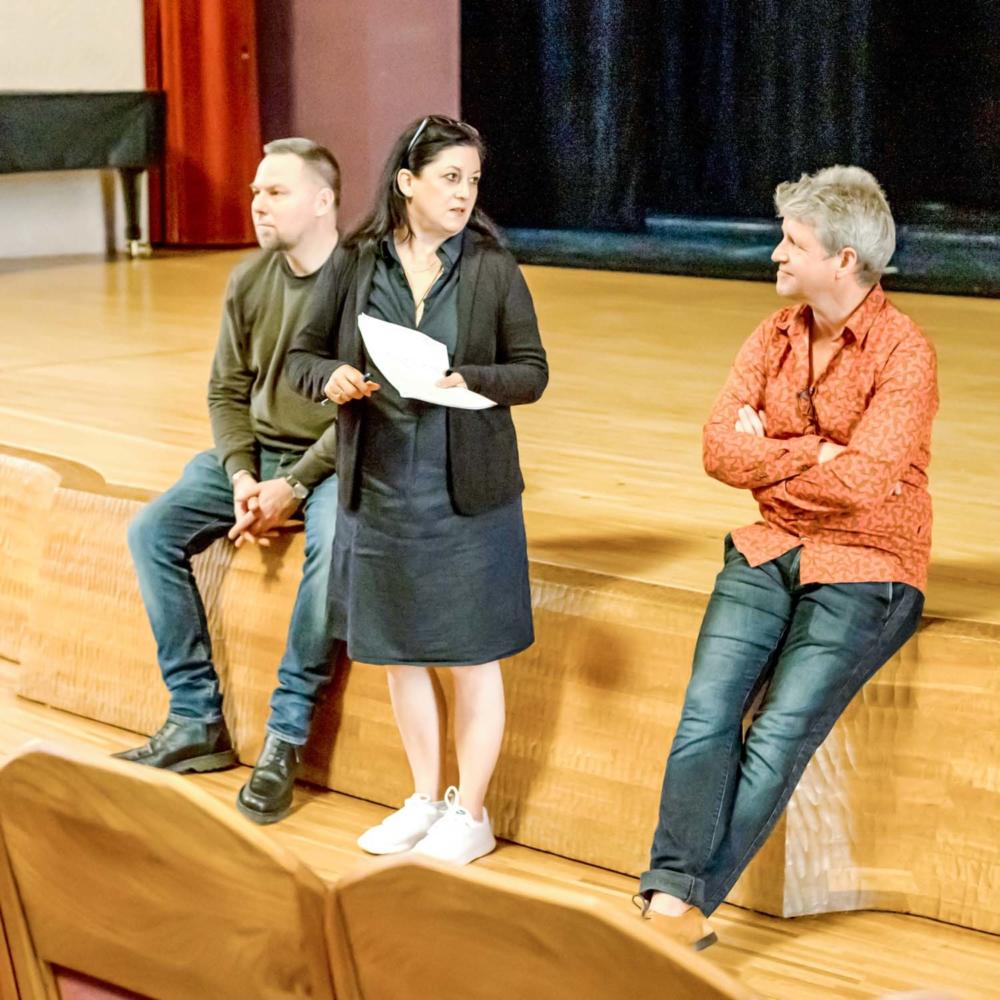Parsifal and eurythmy
Richard Wagner’s Parsifal will be performed three times at the Goetheanum – with plenty of eurythmy.
‘I am interested in the question of how I meet others in a time that suffers from lack-of-empathy syndrome. I must develop compassion,’ says one of the 37 eurythmists in the Parsifal ensemble. The time was ‘crying out’ for Richard Wagner’s work, for ‘in Parsifal being compassionate leads to a kind of knowledge.’
With this production of what Wagner designated a Bühnenweihfestspiel (stage consecration festival), the team of artistic directors around Jasmin Solfaghari is making history, since there are no known cases of eurythmy being so prominent in a huge work such as Parsifal. (In 1960 Roberto Lupi’s one-act opera La Danza di Salomè was performed in Florence with Lea van der Pals as a eurythmist. In 1976 Götz Friedrich included walking eurythmists in one scene of a production at the Stuttgart State Opera). And while operas have been performed at the Goetheanum – Mozart’s Magic Flute in particular – none of them was quite on this scale.
Taking the spiritual content seriously
The team of artistic directors has devoted itself to serving the work and is taking its spiritual content seriously. This starts with the choice of the Goetheanum as the venue – the design of the Main Auditorium itself provides an atmospheric backdrop. Central objects such as Grail, spear and swan, which also have symbolic character, are presented in eurythmy. ‘The grail story unfolds in us,’ says Jasmin Solfaghari, ‘it is an internal process.’
This approach has implications for the production, at all levels: the set has to do justice to the needs of both eurythmists and singers (including the choir); a degree of flexibility is required, transformations must be easily feasible. The costumes of the different performer groups need to match. It will be a novelty for the eurythmists to perform with strong voices ‘next to them’. The artistic directors’ explicit intention is that all involved in the production – choir, solo singers and eurythmists – are equal in creating a consonance.
The combination of eurythmy and opera also brings special tasks for the lighting design in terms of visibility and mood.
Given all these elements, it is not surprising that the artistic directors choose a term for this collaboration that Richard Wagner used himself: gesamtkunstwerk, a synthesis of the arts.
Collaboration as a celebration
It is not least thanks to Alexander von Glenck that this production is being realized at the Goetheanum. It was he who in 2006 financed the installation of the orchestra pit. But the producer also makes the actual production possible. In Jasmin Solfaghari (director), Walter Schütze (set, costumes) and Roland Fister (musical director) he found a professional team with Wagner experience. From the Goetheanum there are Stefan Hasler (director eurythmy) and Klaus Suppan (light design). Felix Lindenmaier created a foundation by finding in Richard Wagner’s score, for the eurythmy, subtle and nuanced soul stirrings in the characters and their relationships.
The singers are of international renown, and they are supported by the Baden-Baden Philharmonic Orchestra (DE), and Vokalwerk der Opernfestspiele Heidenheim (DE), a professional choir founded especially for opera productions. For the eurythmy, the Goetheanum Eurythmy Ensemble and the Eurythmeum Stuttgart are joined by further eurythmists. For them, this collaboration is, as one of them put it, a ‘celebration’.
‹Parsifal› (sold out) 2, 7 and 9 April 2023, Goetheanum
Web Parsifal-Wagner
Parsifal
Parsifal first passes through a stage where he learns compassion […] Driven by an impetuous urge to embrace knighthood, he abandoned his mother, Herzeleide, who then died of sorrow. He battled and he killed the beast. […] In the second stage he learns to rise above desire without having to kill the organs of sensory desire. He reaches the Holy Grail but does not yet understand his task. He learns about it as he is initiated into life. He apparently falls under Kundry’s spell but stands the test. […] Human beings must awaken a soul within that does not eliminate the sense organs but ennobles the senses because virgin matter will give birth to the ‘I’, to the Christ. The Christ is born in Parsifal.
Source: Rudolf Steiner: GA 92, lecture of 19 May 1905

